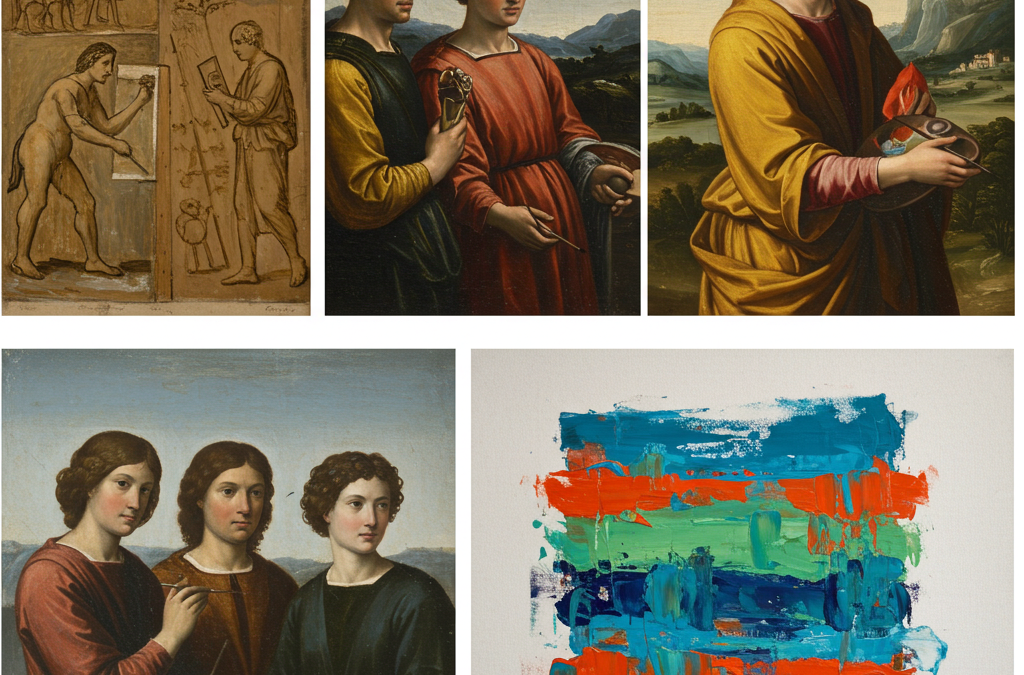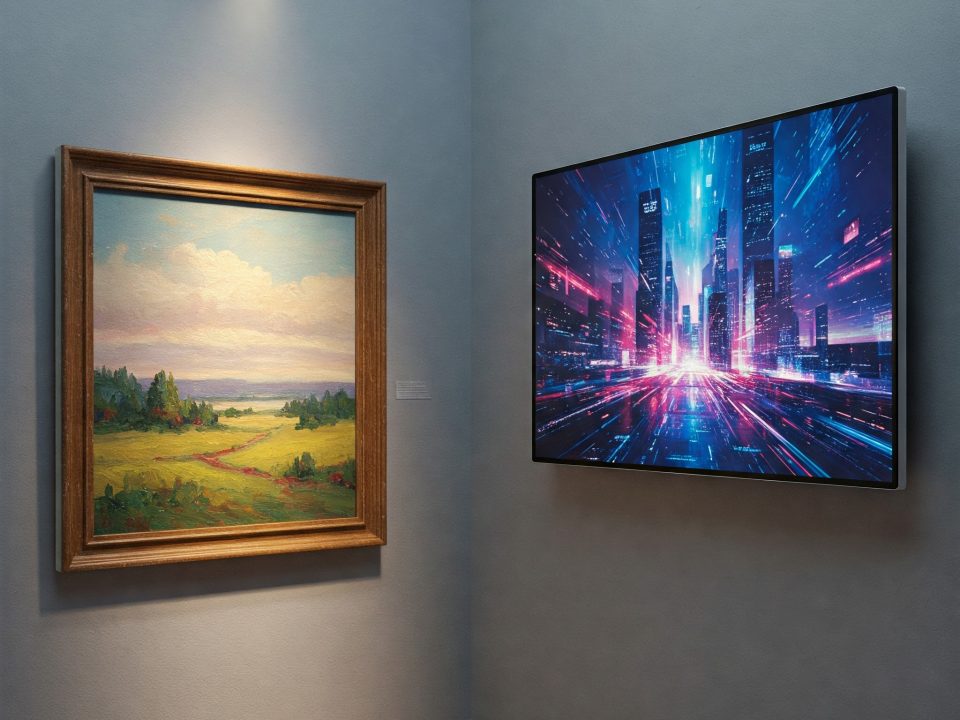
The Transformative Power of Canvas Art in Shaping Interior and Commercial Spaces
May 6, 2025Canvas, a seemingly unassuming material, has served as the bedrock for countless artistic endeavors throughout history. Its journey from rudimentary beginnings as a practical support to its current status as a profound symbol of artistic expression is a testament to its versatility, durability, and the enduring human need to create. This extensive exploration delves into the rich tapestry of canvas’s evolution, tracing its origins, its pivotal role in major art movements, and its continued relevance in the contemporary art world.
Long before the term “canvas” became synonymous with painting, artists sought out a diverse array of surfaces upon which to manifest their creative visions. Cave walls bore the earliest expressions of human artistry, followed by wooden panels, treated animal hides, and even plaster frescoes adorning ancient structures. These surfaces, while serving their purpose, often presented limitations in terms of portability, size, and the nuances they could capture. The emergence of canvas as a support marked a transformative moment in the history of art, liberating artists from the constraints of heavier, more rigid materials.
The earliest forms of canvas were crafted from natural fibers such as linen and cotton, chosen for their inherent strength and flexibility. These fabrics, when stretched tautly over wooden frames and meticulously prepared with layers of gesso—a mixture of binder and pigment used to create a smooth, non-absorbent surface—provided artists with a lightweight yet robust support. This innovation allowed for greater experimentation with scale and technique, enabling artists to explore narratives and concepts with unprecedented freedom. The portability of canvas also facilitated the development of easel painting, allowing artists to work in various locations and to transport their creations more easily.
The Renaissance, a period of profound artistic and cultural rebirth, witnessed the ascendance of canvas as the preferred medium for many of the era’s most celebrated masters. Artists like Leonardo da Vinci, with his enigmatic “Mona Lisa” painted on poplar panel but whose explorations undoubtedly influenced the adoption of canvas, and Michelangelo, whose monumental frescoes hinted at the expressive potential of large-scale works, indirectly paved the way for canvas’s dominance. Venetian painters, such as Titian and Tintoretto, were early adopters of canvas, recognizing its suitability for the humid climate and its ability to handle the rich colors and dynamic compositions that characterized their work. The flexibility of canvas allowed for a greater sense of movement and drama in their paintings, contributing to the distinctive style of the Venetian School.
Over the subsequent centuries, canvas art evolved in tandem with shifting cultural, social, and technological landscapes. The Baroque and Rococo periods embraced the grandeur and theatricality that large canvases could convey, using them to depict dramatic historical scenes, mythological narratives, and opulent portraits. Artists like Rubens and Rembrandt masterfully exploited the texture and absorbency of canvas to create rich layers of paint and dramatic lighting effects.
The 19th century brought about radical transformations in artistic practice, with the Impressionist movement challenging traditional academic styles. Artists such as Monet, Renoir, and Degas moved away from meticulous detail, instead focusing on capturing the fleeting effects of light and color. Canvas, with its relatively forgiving surface, allowed for the rapid brushstrokes and plein air painting that defined this movement. The texture of the canvas itself often became part of the artistic expression, contributing to the overall visual experience.
The 20th century witnessed an even more dramatic departure from tradition, with canvas serving as a battleground for avant-garde movements. Cubism, led by Picasso and Braque, fragmented and reassembled forms on the canvas, challenging conventional perspectives. Abstract Expressionism, with artists like Jackson Pollock and Mark Rothko, explored the emotional power of pure color and gestural marks on large, unstretched canvases, pushing the very definition of painting. Pop Art, spearheaded by Andy Warhol and Roy Lichtenstein, brought popular culture and mass media onto the canvas, blurring the lines between high and low art. These movements fundamentally redefined the purpose and potential of canvas, transforming it into a site for radical experimentation and conceptual exploration.
Today, the legacy of these groundbreaking artists continues to inspire contemporary practitioners. Artists now seamlessly integrate classical techniques with modern technologies, including digital printing, mixed media, and even augmented reality, onto the canvas. Archival-quality canvases, treated with UV-resistant coatings and designed to resist fading and deterioration, ensure the longevity of these contemporary expressions. The digital revolution has also democratized access to canvas as a medium, with affordable printing options allowing digital artists to translate their creations onto physical surfaces.
Canvas, therefore, stands not merely as a passive support for paint but as an active participant in the artistic process. Its texture, its absorbency, and its very presence contribute to the final artwork. From its humble origins as a practical solution to the challenges of artistic creation, canvas has evolved into an enduring symbol of human creativity, a versatile and resilient foundation that continues to inspire and challenge artists across the globe. Its story is a testament to the ongoing dialogue between artists and their chosen materials, a dialogue that continues to shape the ever-evolving landscape of art.




